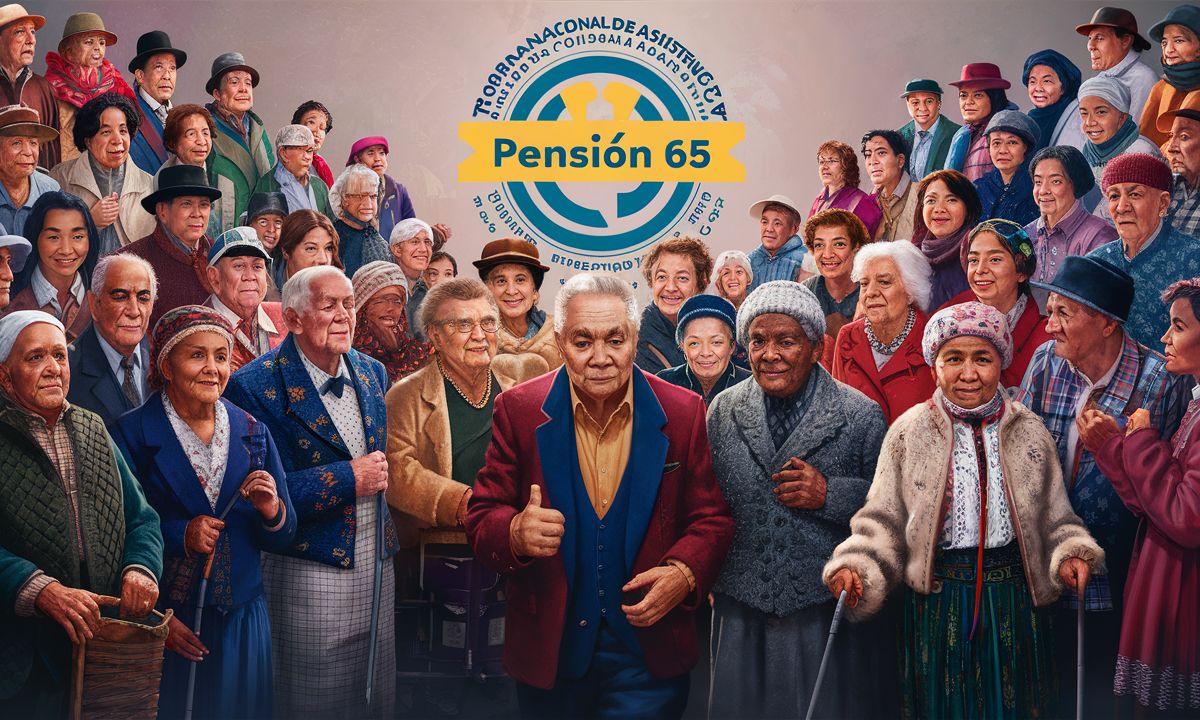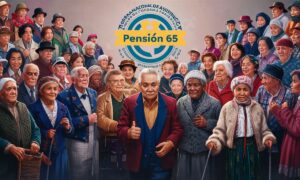The Programa Nacional de Asistencia Solidaria Pensión 65 is a vital social initiative created by the Ministry of Development and Social Inclusion (MIDIS) in Peru. Launched on October 19, 2011, by Supreme Decree No. 081–2011-PCM, this program was established to offer essential financial support to senior citizens living in extreme poverty. It aims to restore the dignity of these individuals, ensure they can meet their basic needs, and promote their integration into family and community life.
This effort goes beyond financial assistance. It serves to stimulate local economies through small markets and fairs, fostering community engagement. The program’s mission also includes increasing access to health services for seniors and reducing the gap between poor and non-poor elderly populations.
¿A quiénes está dirigido Pensión 65?
Pensión 65 targets elderly individuals aged 65 and above who live in conditions of extreme poverty, as determined by the SISFOH (Household Targeting System) in Peru. The goal is to guarantee a minimum level of economic security for this vulnerable segment of the population.
Beneficiaries must meet the following criteria:
Eligibility Requirements:
- Must be 65 years of age or older.
- Classified by SISFOH as living in extreme poverty.
- Not receiving any other form of pension or regular financial aid.
- Must not be housed in a public or private care institution.
By focusing on these criteria, the government ensures that aid is directed precisely where it is needed most.
Objectives of Pension 65
The objectives of the Pensión 65 program are broad and significant:
- Provide bimonthly economic support of 250 soles.
- Reduce elderly poverty and its consequences.
- Increase access to health and social services.
- Encourage community participation and reintegration of seniors.
- Reduce the social inequality faced by the aging population.
This program also reflects Peru’s commitment to human rights and social inclusion.
Benefits of the Program
| Benefit Area | Description |
|---|---|
| Economic Aid | 250 soles every two months per beneficiary. |
| Health Access | Improved inclusion in health campaigns and services. |
| Community Engagement | Encourages respect and reintegration of seniors in their communities. |
| Support for Local Economy | Economic stimulus through increased local consumption. |
| Targeted Assistance | Resources reach the most vulnerable thanks to SISFOH classification. |
Implementation Strategy
The success of Pensión 65 lies in its strategic implementation:
- Decentralized Operations: Local governments and health centers help verify data and distribute aid.
- Transparency: Funds are transferred directly to beneficiaries through secure channels like Banco de la Nación.
- Monitoring & Evaluation: Regular audits ensure funds reach the intended recipients.
Built-in Protections Include:
- Biometric verification of recipients.
- Community-based complaints and resolution systems.
- Periodic updates to the SISFOH database.
Impact on Peruvian Society
Pensión 65 has significantly impacted the well-being of older Peruvians:
- Over 600,000 elderly individuals have benefited since its inception.
- Encouraged routine health check-ups and vaccinations among seniors.
- Reduced elder abandonment by promoting family responsibility.
- Helped many seniors regain dignity and independence.
Challenges and Future Outlook
Despite its success, the program faces challenges:
- Remote area access remains limited.
- Underreporting of poverty levels may exclude eligible individuals.
- Financial sustainability depends on consistent government funding.
To ensure long-term success, MIDIS is exploring:
- Integrating digital platforms for easier registration.
- Partnerships with NGOs for logistical support.
- Enhanced outreach campaigns in indigenous and rural languages.
Final Words
The Pensión 65 program stands as a crucial pillar of Peru’s social protection framework. Its focused approach ensures that the most vulnerable elderly citizens are not left behind. Through financial assistance, health support, and social inclusion, it promotes a dignified and active life for Peru’s aging population.
Moving forward, the success of Pensión 65 will rely on continuous evaluation and adaptation. Strengthening infrastructure, reaching remote areas, and enhancing collaboration with local actors will be key to ensuring that every eligible senior enjoys a secure and respectful old age.
FAQs
What is Pension 65 in Peru?
Pension 65 is a government program in Peru that provides a bimonthly financial subsidy of 250 soles to elderly citizens aged 65 and above who live in extreme poverty. It is managed by the Ministry of Development and Social Inclusion (MIDIS).
Who qualifies for the Pension 65 program?
Eligibility is based on age (65+), economic status (extreme poverty as classified by SISFOH), and not receiving any other pension or regular income. The applicant must also not reside in a care facility.
How often are payments made in Pension 65?
Payments are made every two months (bimonthly). Beneficiaries receive 250 soles via authorized banking channels like Banco de la Nación.
How does Pension 65 help the elderly?
Beyond financial aid, Pension 65 promotes access to healthcare, encourages community reintegration, and strengthens the dignity and autonomy of elderly citizens.
Is the Pension 65 program sustainable long-term?
The government continues to invest in the program, but challenges like geographic reach and financial sustainability remain. However, MIDIS is working on innovations to ensure long-term success.
Read more informationhttp://grammargurus

I m John Nicker a Content Writer and SEO Expert with 5 years Experiness. I have Already work on BBC News Website.
















